A Class 1 e-bike is probably the purest form of electric bicycle out there. The motor only kicks in to help while you’re pedaling, and it taps out once you hit a set speed limit—20 mph in the US or 25 km/h in Australia. Think of it as your own personal tailwind, giving you a boost on hills and making those long commutes feel way less intimidating. The key thing to remember? No throttle.
What Makes a Class 1 E-Bike?
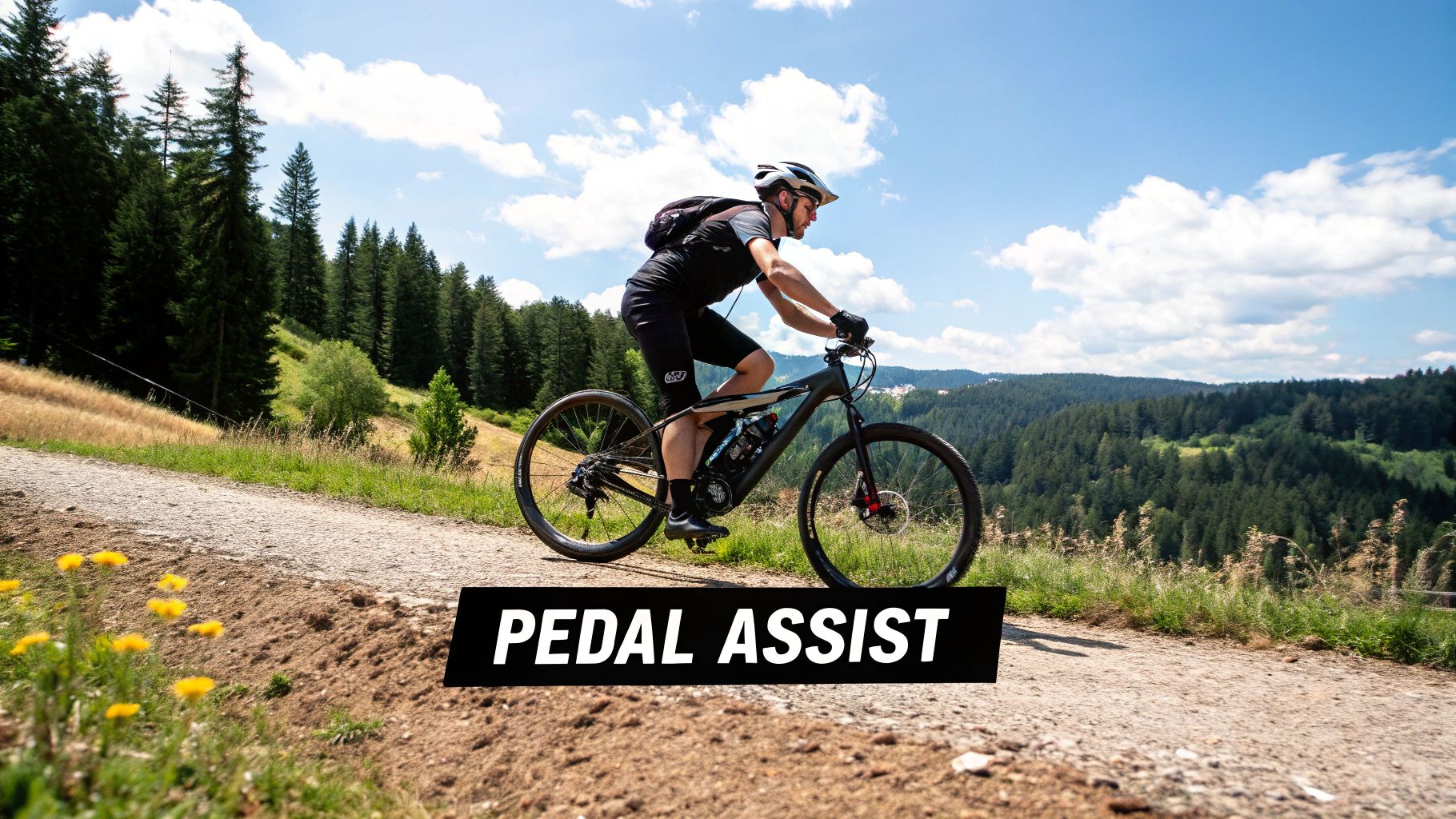
Let's get straight to the point. A Class 1 e-bike gives you that classic cycling experience, just with a little extra oomph. Imagine someone giving you a gentle, consistent push whenever you tackle a tough hill—that’s exactly what the pedal-assist system feels like.
Because you have to pedal to get the motor going, the whole experience feels incredibly natural and intuitive. You’re still riding a bike, not a scooter. You're always in control, just like on a regular bike, which is a huge reason why these are the most widely accepted and regulated e-bikes across the United States and Australia.
The Defining Features
So, what are the non-negotiables that officially make an e-bike a Class 1? The rules are simple and designed to keep things safe and accessible for everyone.
- Pedal-Assist Only: The motor won't do a thing unless you're pedaling. This is what keeps it feeling like a true bicycle.
- Speed Cap: As soon as you hit the legal assisted speed limit (20 mph in the US, 25 km/h in Australia), the motor assistance politely bows out. Want to go faster? It’s all you, pal.
- No Throttle: There's no button or grip to twist for a free ride. You've got to put in the work to get the reward.
For a quick breakdown, here’s a simple table with the core specs.
Class 1 E-Bike At a Glance
| Feature | Specification |
|---|---|
| Motor Activation | Pedal-Assist Only (Pedelec) |
| Top Assisted Speed | 20 mph (US) / 25 km/h (AU) |
| Throttle | Not Equipped |
| Common Use | Bike Lanes, Paved Paths, Multi-Use Trails |
This simple set of rules is why Class 1 e-bikes are welcome in so many places.
This straightforward system has been adopted by over 30 states in the US and is the standard across Australia to help regulate e-bikes and make sure they fit right in with traditional bikes on paths and trails. If you want to dive deeper, you can explore more about the e-bike classification system to see how it compares to other classes. This versatility makes it a fantastic choice for just about anyone, from daily commuters to weekend adventurers.
The Three E-Bike Classes Demystified
So, you know the basics of a Class 1 e-bike, but how does it really compare to its cousins, the Class 2 and Class 3 (in the US)? Getting a handle on these differences is key to making sure you don't end up with a bike that’s either too much or not enough for your daily grind or weekend adventures.
Meet the Rest of the Family: Class 2 and Class 3
First up is the Class 2 e-bike, which is common in the US market. The big deal here is the throttle. You can kick back and let the motor do all the work, zipping you along up to 20 mph without ever touching the pedals. It's the ultimate choice if you just want to cruise and take in the sights.
Then there’s the speed demon of the US group: the Class 3 e-bike. Just like a Class 1, you have to pedal for the motor to kick in. The difference? It’ll keep giving you a boost all the way up to a speedy 28 mph. For anyone with a longer commute or a need for speed, this is your ride. In Australia, throttle-equipped bikes and those assisting over 25 km/h fall into different legal categories and are generally not permitted on public roads or bike paths.
It really boils down to this: Class 1 feels like a traditional bike with a superpower, Class 2 gives you throttle-on-demand freedom (in the US), and Class 3 is all about getting from A to B as fast as legally possible on two wheels.
This handy infographic breaks it all down visually, comparing speed, throttle, and where each bike really shines.
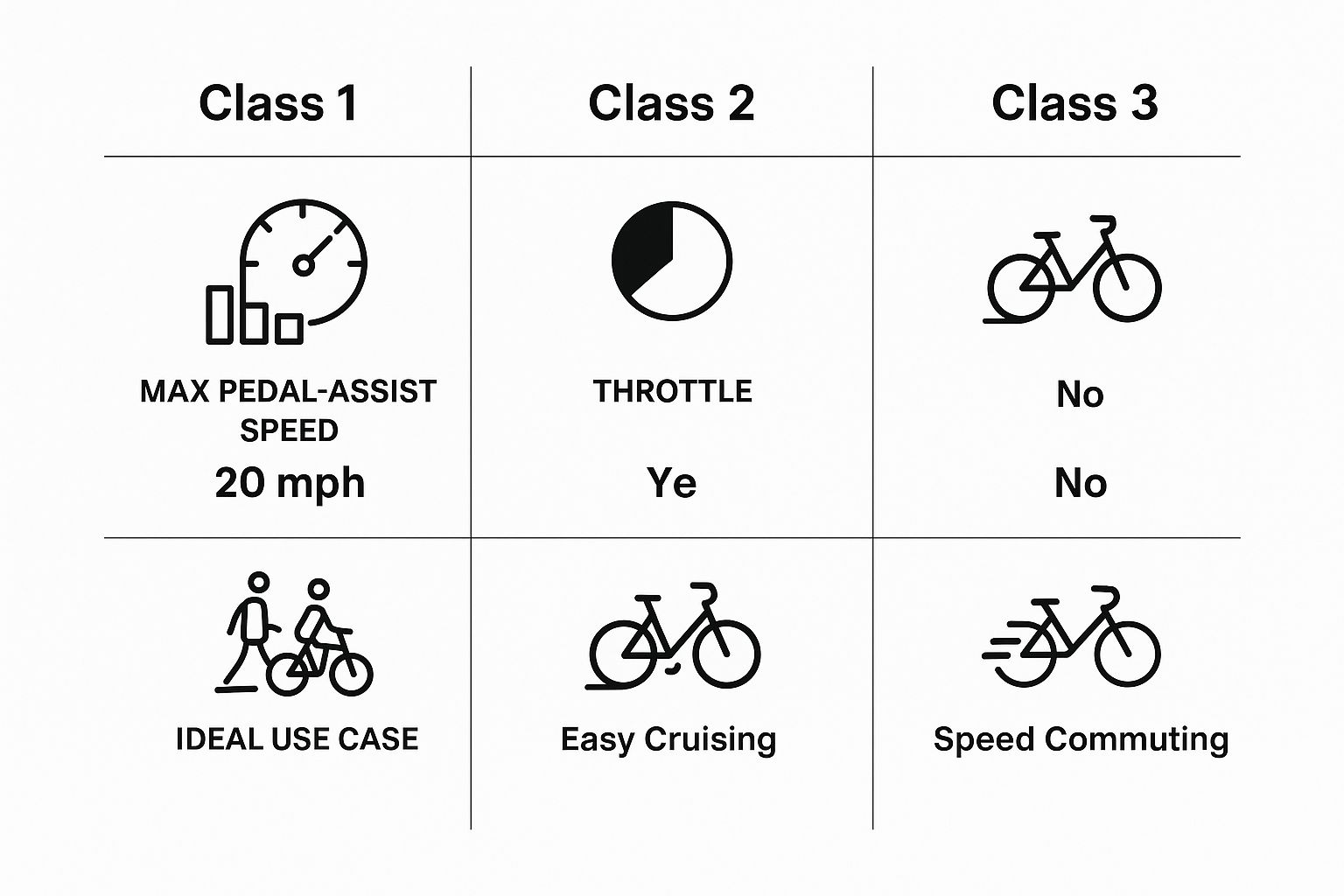
To make it even simpler, here’s a quick side-by-side comparison for the US system.
E-Bike Class Comparison Chart (US System)
This table lays out the essential differences between the three main e-bike classes recognized in the United States.
| Feature | Class 1 E-Bike | Class 2 E-Bike | Class 3 E-Bike |
|---|---|---|---|
| Assistance Type | Pedal-Assist Only | Pedal-Assist & Throttle | Pedal-Assist Only |
| Max Speed | 20 mph | 20 mph | 28 mph |
| Throttle? | No | Yes | No |
| Best For | Bike paths, trails, natural feel | Casual rides, commuting | Fast commuting, keeping up with traffic |
As you can see, that throttle on the Class 2 and the higher speed of the Class 3 are what really set them apart from the versatile, widely-accepted Class 1.
But Don't Forget the Motor
Beyond the class system, the type of motor your e-bike has makes a huge difference in how it feels to ride. A mid-drive motor, for example, often provides a more balanced and natural-feeling power delivery compared to a hub motor.
If you're a real stickler for ride quality, it's worth digging into the details. We've got a whole guide on what makes the best mid-drive electric bike if you want to go deeper. Getting the right class and the right motor is the secret to finding an e-bike you'll absolutely love.
Where Can I Take My Class 1 E-Bike?
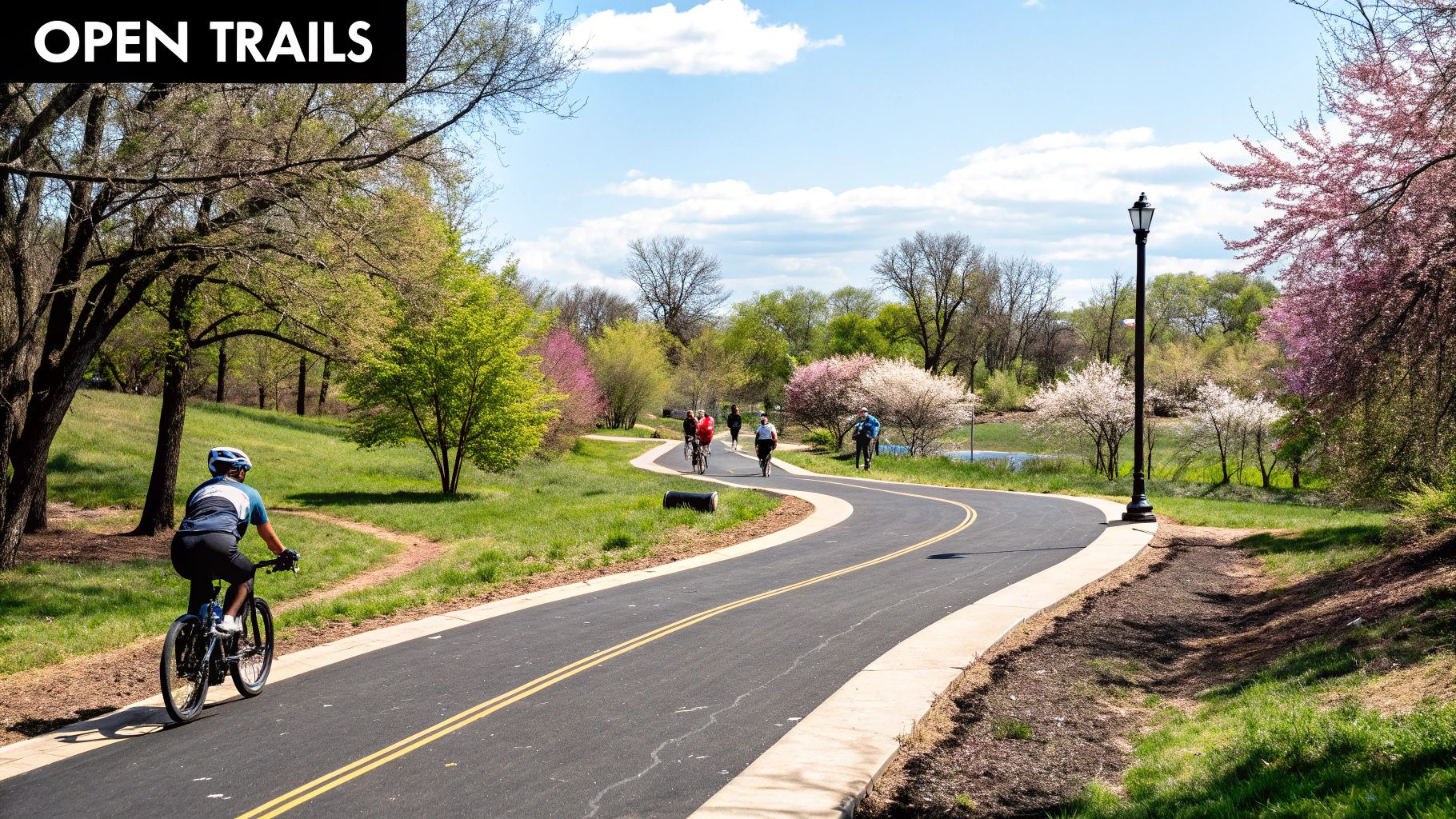
Here’s the best part about owning a Class 1 e-bike: you can ride it almost anywhere you'd ride a regular bike. Since the motor only kicks in when you pedal and cuts off at a reasonable speed, most states and cities in the US and Australia treat them just like their non-electric cousins. This wide acceptance is what makes them so incredibly versatile.
You can cruise down city bike lanes, explore paved park trails, and ride on multi-use paths alongside pedestrians and other cyclists. Think of it as having an all-access pass to your local bike infrastructure, but with a friendly boost to flatten hills and make your ride a whole lot more fun.
Hitting the Pavement in the City
When it comes to daily commutes or just zipping around town, the Class 1 e-bike is king. It’s a perfect match for the stop-and-go rhythm of city riding, giving you that little nudge to get moving at a green light and making you feel like a superhero climbing a steep hill.
- Dedicated Bike Lanes: You'll fit right in with the regular cycling crowd.
- Paved Park Paths: Easily explore local greenways and waterfronts.
- Bike-Friendly Streets: Keeping up with traffic feels safer and much less strenuous.
The rule of thumb for Class 1 is pretty simple: if a regular bike is allowed, your e-bike probably is, too. This opens up a huge network of routes without you having to worry about complicated rules.
Venturing Off-Road onto Trails
The fun doesn't stop at the pavement, either. A growing number of places are welcoming Class 1 e-bikes onto natural surface and mountain bike trails. This is a game-changer, opening up new adventures for riders who could use a little help tackling steep climbs or longer distances.
For instance, Ohio recently changed its rules to allow Class 1 e-bikes on many natural trails in state parks. We're seeing this trend pop up all over the US and Australia as land managers realize these pedal-assist bikes have about the same impact on trails as traditional mountain bikes.
Just remember that rules can get super specific from one park to the next. It’s always a good idea to do a quick check on the local park's website before you load up the bike and head out. A little homework goes a long way in making sure you’re good to go.
Figuring Out the Rules of the Road in the US & Australia
Trying to make sense of e-bike laws can feel like a headache, but for anyone riding a Class 1, things are refreshingly straightforward. Since these bikes are pedal-assist only and the motor cuts out at a safe speed (20 mph in the US, 25 km/h in Australia), they’re almost always treated just like regular bicycles, not motorcycles or mopeds.
This was done on purpose. The whole idea was to keep Class 1 e-bikes accessible, safe, and welcome on the same bike paths and lanes you already use. And for you, the rider, that means less red tape.
Forget About Licensing and Registration
The first thing most people wonder is, "Do I need a license for this thing?" The good news is that in both the US and Australia, the answer is a simple "no" for a compliant Class 1 e-bike.
- No driver's license? No problem. You don’t need one to hop on and ride.
- Skip the trip to the DMV. There’s no need to register your e-bike as a vehicle.
- No mandatory insurance. You aren't legally required to carry vehicle insurance for it.
It all boils down to a simple philosophy: if it rides and acts like a bicycle, it should be regulated like one. This simple approach makes it much easier for people to get out and ride without a bunch of legal hoops to jump through.
Of course, you still need to use your head. Many US states recommend riders be at least 16 years old, and helmet laws are mandatory in Australia and can change from one town to the next in the US, so it's always good to know the local rules.
Where You Can Ride: National vs. Local Rules
On a national level, a Class 1 e-bike has to follow two main rules: its motor has to be a certain power (750 watts or less in the US, 250 watts for Australia), and the pedal assist must stop working once you hit the speed cap. This standard definition helps government agencies decide where these bikes are allowed.
For example, the US National Park Service and the Bureau of Land Management often give Class 1 e-bikes the green light on trails where all other motorized vehicles are a big no-no. To see how this plays out in a specific area, you can check out local guidelines on e-bike use in public spaces.
Even with these clear national guidelines, it’s always a smart move to double-check the rules for your specific area. A city park or a particular trail might have its own set of policies. A quick look at your local parks department website is usually all it takes to make sure you’re good to go.
Why a Class 1 E-Bike Might Be Your Perfect Match
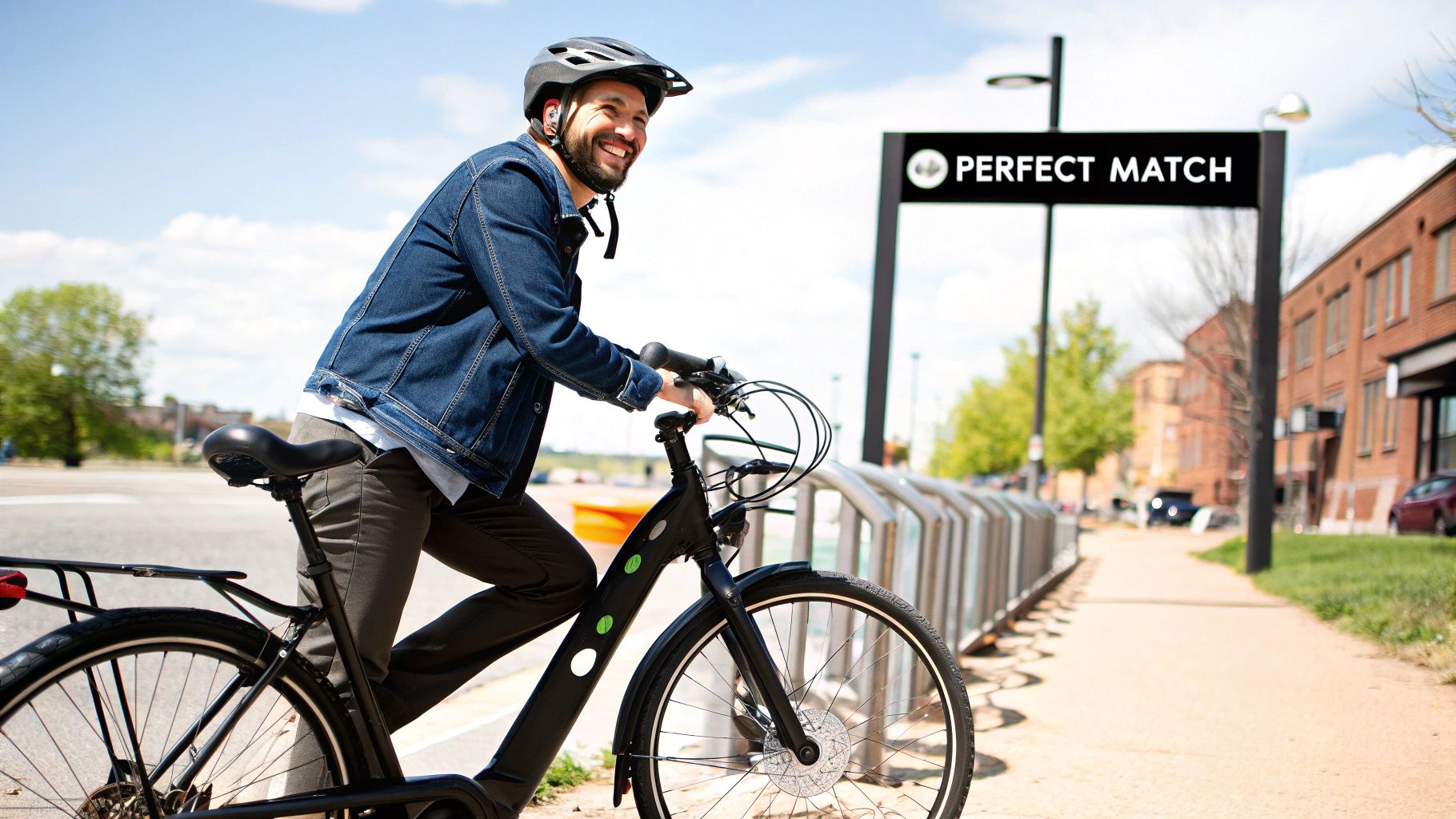
Forget the dry regulations and technical specs for a moment. The real reason so many riders in the US and Australia choose a Class 1 e-bike comes down to one thing: the feel. It’s not about overpowering you with a motor; it's about amplifying your own effort. It feels like you, just on your best day.
This makes it an amazing fitness tool. You're still putting in the work and getting your heart rate up, but that subtle assist helps flatten the hills and takes the edge off of tough climbs. It’s a genuine workout, just without the joint-punishing strain.
The Sweet Spot Between Effort and Ease
Think of a Class 1 e-bike as the perfect middle ground. It’s the bridge between a classic, human-powered bicycle and a more potent electric ride, giving you just enough of a boost to make a real difference without robbing you of that satisfying feeling of having powered the ride yourself.
This is exactly why they appeal to such a wide range of people.
- The Energized Commuter: Picture this: you show up to the office feeling invigorated, not drenched in sweat. The pedal assist lets you cruise past traffic and glide up inclines, making your commute the best part of your day.
- The Weekend Explorer: That 30-km trail that always seemed a bit too ambitious? It’s suddenly well within reach. A Class 1 gives you the confidence to ride further and discover new places without the fear of hitting a wall miles from home.
- The Returning Rider: If you’re getting back on a bike after some time away, a Class 1 is your best friend. It offers a gentle, supportive nudge that rebuilds your confidence and reminds you just how fun cycling can be.
The real magic of a Class 1 e-bike is that it encourages you to ride more often, go farther, and have more fun doing it. It keeps the pure joy of pedaling a bike totally intact while knocking down the barriers that might have kept you on the couch.
This unique combination of accessibility and an authentic cycling experience is its true strength. And to make those longer, more frequent rides even better, you'll want the right gear. Check out our guide to the best electric bike accessories to fully kit out your new ride.
Got Questions About Class 1 E-Bikes? We’ve Got Answers.
Alright, let's wrap this up by hitting a few of the questions we hear all the time. Think of this as your quick-fire FAQ to clear up any last-minute confusion before you start riding.
Do I Need a License or Insurance to Ride?
Nope! For the most part, you're in the clear. In both the US and Australia, a compliant Class 1 e-bike is treated just like a regular bicycle. That means no special license, no registration, and no mandatory insurance.
That said, it's always smart to give your local city or state rules a quick look. Sometimes, local laws can have their own little quirks, so a quick search can save you a headache later.
What Happens if My Battery Dies When I'm Out?
You pedal! Simple as that. This is one of the best parts about a Class 1 e-bike—it’s always a bike, with or without the power. If you run out of juice, the motor just stops helping, and you ride it home like any other bicycle.
Sure, it'll feel a bit heavier because of the motor and battery, but it won’t leave you stranded. Want to get the most out of every charge? Check out our guide on maximizing your electric bike battery life.
Can I Actually Go Faster Than the Assisted Speed Limit?
Absolutely, you just have to earn it with some pedal power. The motor is programmed to cut out once you hit its speed cap (20 mph in the US / 25 km/h in Australia), but that's not a hard speed limit on the bike itself. If you've got strong legs or a nice downhill slope, you can go as fast as you can pedal.
The assisted speed cutoff is only for the motor's assistance. We strongly advise against trying to modify your motor to get around this limit. Doing so can change your bike's legal classification, potentially making it illegal to ride where you normally would.
Here at Punk Ride, our whole mission is to match you with an electric ride that just fits. Whether you're upgrading your commute, exploring new trails, or just looking for a new way to have fun, we’ve got your back. Check out our full collection of top-notch e-bikes and e-scooters over at https://www.punkride.com.




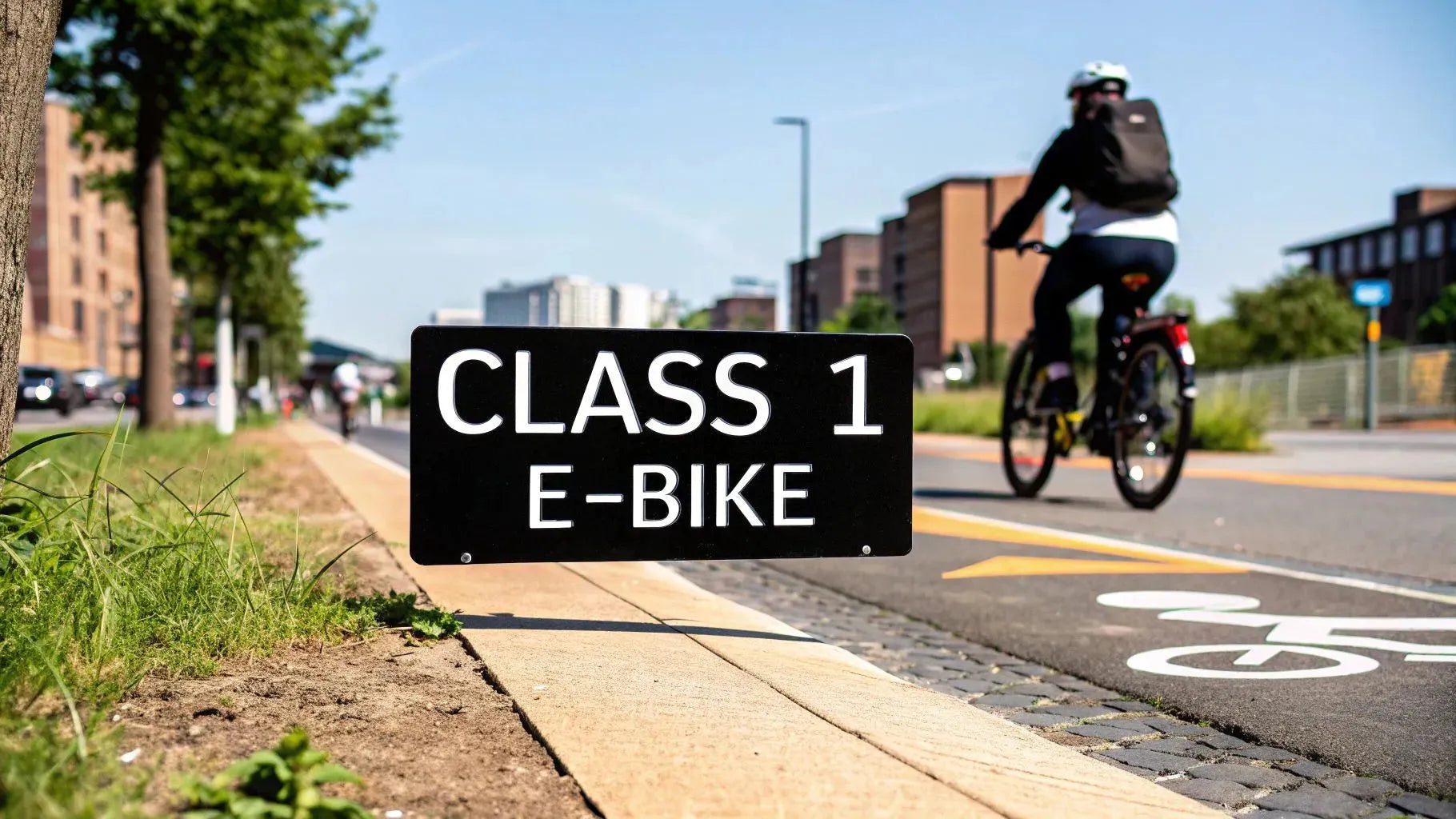
Share:
What Is Urban Mobility And How It's Changing Cities
Are Electric Bikes Worth It? The Ultimate Guide